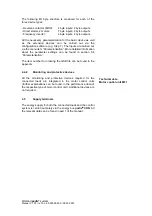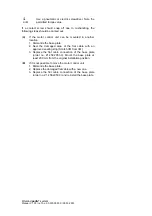
Wieland
podis
system
Manual V 1.03 / ref. no. 00.000.0059.0 / 28.03.2001
4.3 Permitted
use
podis
motor control units may only be used in connected with
podis
CON
flat cables. Any other type of energy supply is not
permitted. You can find notes about flat cables in part 1 of the
manual.
4.4 Additional
devices
4.4.1
PROFIBUS DP field bus system
The motor control units are integrated via their bus coupler into
an existing PROFIBUS DP system and controlled.
PROFIBUS DP is an open bus system according to the norm
EN 50170, volume 2, PROFIBUS with the transmission protocol
”DP” (DP stands for a distributed interface system).
Physically, PROFIBUS DP is either an electrical power system
based on a shielded twin-core cable or an optical system based
on an optical fibre.
The transmission protocol ”DP” enables a fast, cyclical data
exchange between the control CPU and the distributed
peripheral devices.
Structure of a PROFIBUS DP network
A PROFIBUS DP network is generally composed of a master
group, programmable controllers and field bus couplers
(slaves).
The programmable controllers displayed (PLC, PC) either
contain the respective master interface directly (e.g. Simatic S7-
315-2-DP) or in the form of an interface module (e.g. Simatic
S5-115U uses the interface module IM 308C as the master).
The DP slaves are the peripheral devices such as
podis
DRIVE
or distributed I/O systems.
Distributed peripheral devices
When configuring an installation, the process inputs and
outputs are frequently inserted in a central position in the
automation system.
If the I/Os are placed at greater distances from the automation
system, the installation can become very extensive and
confusing. Increased electromagnetic interference also effects
the reliability of the application.
















































